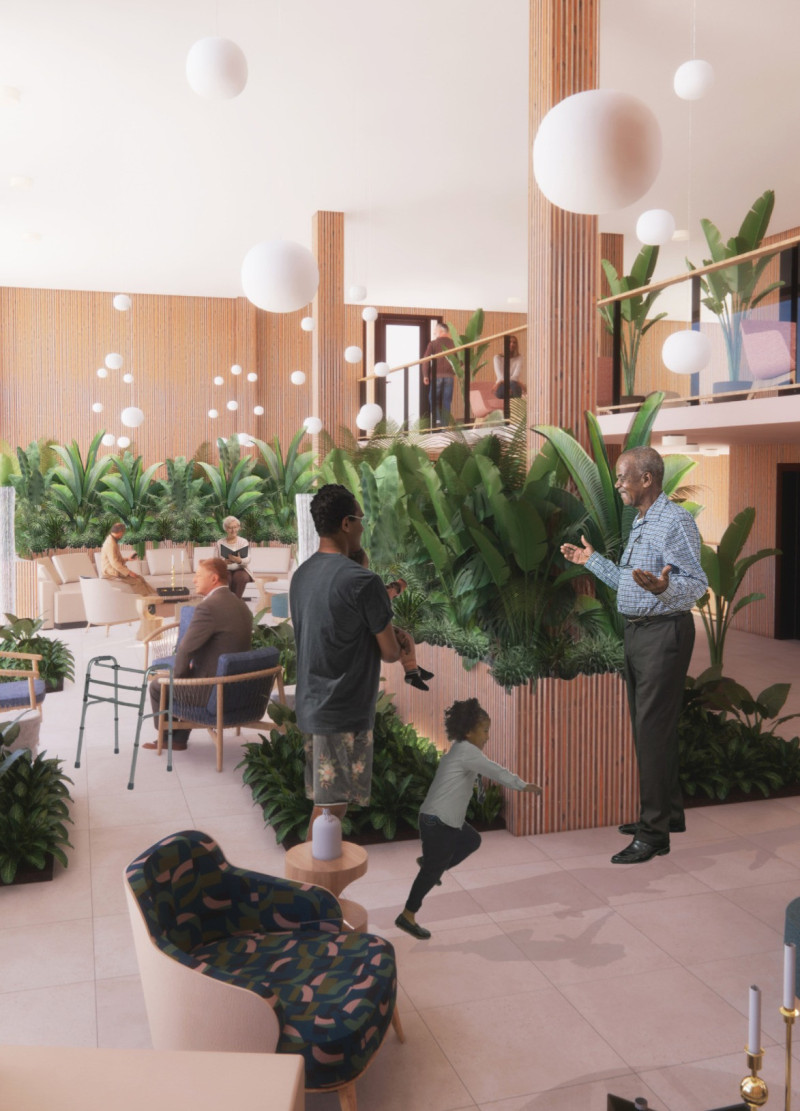5 key facts about this project
At the core of the architectural design is a clear representation of modern sensibilities coupled with traditional influences. The use of space is highly deliberate, with open layouts that promote natural light and enhance the flow within each area. This emphasizes a connection to the outdoors, allowing occupants to engage with the surrounding environment seamlessly. The inclusion of large windows and strategically placed openings encourages visual continuity and fosters a sense of well-being among users.
Materiality plays a pivotal role in this project, showcasing a selection of sustainable and durable materials that align with contemporary environmental practices. The primary materials used in the construction include exposed concrete, timber, glass, and stone, each chosen for their aesthetic appeal and functional properties. Exposed concrete is utilized for its structural capabilities and minimalist aesthetic, while timber adds warmth and a natural texture that contrasts beautifully with the rigidity of concrete. Glass elements not only serve to enhance visibility but also reinforce the connection between interior and exterior spaces. Natural stone is incorporated strategically, providing a timeless quality that anchors the design in its geographical context.
The functional aspects of the project are equally noteworthy. Each space is designed with the user experience as a focal point, ensuring that functionality is prioritized without compromising on style. Kitchens are equipped with modern appliances and smart storage solutions, reflecting the needs of today’s occupants who value both efficiency and design. Living areas promote social interaction, with adaptable spaces that can cater to gatherings or personal retreats. The attention to detail in the spatial organization contributes to a sense of community within the project, encouraging both private and shared experiences among users.
Unique design approaches are evident throughout the architectural layout, particularly in how the building interacts with its site. The orientation of the structure takes advantage of natural light, optimizing energy efficiency while enhancing the aesthetic qualities of each room. Landscape integration is also a key consideration, with outdoor areas harmoniously connected to indoor spaces, promoting a lifestyle that embraces outdoor living. Rooftop gardens or terraces serve not only as recreational areas but also contribute to environmental sustainability by promoting biodiversity.
The project reflects a commitment to innovative architectural ideas that resonate with contemporary needs while respecting historical and cultural contexts. The balance achieved between modern functionality and traditional design elements sets this project apart as a noteworthy example of architectural excellence. As a result, the outcome is not just a building but a carefully crafted environment that encourages interaction, reflection, and a deeper connection to the locale.
For those interested in exploring this project further, it is encouraged to review architectural plans, sections, and designs to gain a comprehensive understanding of the intricate details and innovative solutions that define this architectural endeavor. The nuances of the architectural choices made throughout the project underscore its significance in contemporary design discourse, making it a valuable case study for both practitioners and enthusiasts alike.


























